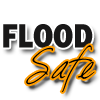
|
|
- TPCG
- TPCG News Room
- Proper Clean-up Following Flood Can Reduce Molds and Mildew and Lessen Health Risks
TPCG News Room
Terrebonne Parish Consolidated Government

Donations have been requested for rubber boots, buckets, bleach, mops, paper towels, and other supplies for cleaning the thousands of homes affected by the recent flooding. Below are some tips for preventing mold. Fans, dust and mold masks, socks, and protective eyewear may also be appreciated. Moist, fibrous materials and stagnant water provide the ideal climate for mold growth. However, according to disaster response officials, the risk of illnesses associated with exposure to mold following flooding can be reduced. Large numbers of airborne mold spores can trigger allergic reactions, asthma episodes, infections and other respiratory problems. Exposure to high spore levels also can cause development of an allergy to mold, creating long-term problems. The basic rule is, if you can see or smell mold, take steps to eliminate the excess moisture; then, cleanup and remove the mold by:
After cleaning, apply a disinfectant solution of household bleach (one-fourth cup bleach per gallon of water) to the surface. If the mold has already started to grow back, try a stronger solution: one-half gallon bleach in five gallons of water. A bleach solution should be applied with a handled garden sprayer. Thoroughly wet the studs, wall cavities and floors. Avoid excessive run-off. Use a wet-dry vacuum to collect extra bleach solution. Allow the bleach solution to dry naturally for a six- to eight-hour time period. The bleach solution should not be removed or dried quickly - extended contact time is important. A safety tip:
Molds can infiltrate Sheetrock, carpeting and insulation. When working around moldy areas, use respiratory protection. Individuals vary in their susceptibility to these substances, but almost anyone who breathes enough spores will have an adverse reaction. These reactions can include tightening in the chest, flu-like symptoms or even more severe reactions. The following individuals appear to be at higher risk for adverse health effects of molds:
For more information, visit the following site: http://emergency.cdc.gov/disasters/mold/ Courtesy of SD, 2010 |
NewsContact
Hours of Operation
Mailing Address
|
Resources
|
|
Connect
|
|
©2024 Terrebonne Parish Consolidated Government
0 |
